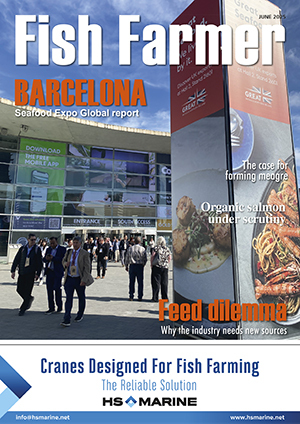Fall in wild salmon numbers 'not down to fish farms'

Please register for FREE to continue reading Fish Farmer
Your FREE registration gives you access to all our content: news and feature articles, regular and special guest columnists, Fish Farmer Magazine e-editions, yearbooks, archives, videos and more
Head of Veterinary Services - Bakkafrost Scotland Limited
IV54 8XFSalary On Application
Marine Operative - Bakkafrost Scotland Limited
PA35 1AG£25,501.10 to £34,472.50 per annum
Broodstock Electrical Engineer - Bakkafrost Scotland Limited
Langais£48,000 per annum
Marine Operative - Bakkafrost Scotland Limited
Isle of Lewis£34,472.50 per annum
Marine Operative (2 weeks on/off) - Bakkafrost Scotland Limited
Portree£32,230.25 per hour
